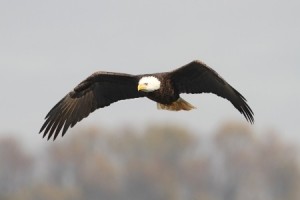Smuggling of wildlife continues—conservation exec

At the kick-off ceremony for the celebration of the International Day of Biological Diversity in Quezon City, BMB Director Theresa Mundita Lim stressed the need on the part of wildlife enforcement authorities to strengthen vigilance against wildlife traffickers.
She said the attempted smuggling of juvenile birds on Tuesday aboard a bus bound for Manila was a strong indication that there remained a market for wild animals even though “they have little chance to survive in captivity.”
According to reports reaching her office, Lim said, seven exotic birds—two juvenile horn bills, a hawk eagle, three juvenile raptors, and an owl—were discovered in two boxes aboard the Twin Hearts bus in Barangay (village) Tabugon, Camarines Norte on May 20.
A television report, which initially misidentified the hawk eagle as the critically endangered Philippine eagle, quoted the bus conductor as saying he was not aware that transporting wild birds was illegal.
The conductor was also quoted as admitting that the bus had transported birds in the past.
Article continues after this advertisementThe birds have been turned over to the regional office of the Department of Environment and Natural Resources, which planned to release them to the wild after health checks.
Article continues after this advertisementThe birds “are very young. It will be a challenge to rehabilitate them. But if we can do it, that [release into the wild] remains to be a first option,” Lim said.
In an interview on Thursday, Lim said it was a shame that there were still people who continued to collect exotic animals that had little chance of surviving outside their natural habitats.
“The message here is we need to strengthen our effort not only in educational campaigns but in actual enforcement of wildlife laws,” she said.
Also on Thursday, the DENR, through the BMB, led the celebration of the International Day of Biodiversity with the theme “Island Biodiversity.”
Lim said it was only recently that the environmental policy focused on the archipelagic nature of the Philippines.
She said it was important to remember that the Philippines was composed of 7,107 islands. “If you save [the species on] one island, it doesn’t mean you save all other islands,” she said.
In a message read for him, Environment Secretary Ramon Paje noted that although the country was one of the “mega-diverse countries” in the world, it was also “one of the hottest of hot spots in terms of biodiversity loss.”
“The list of threatened and endangered species is increasing every year. Biodiversity loss has been accelerating due to habitat loss, overutilization and poaching. We also have to deal with the destruction brought by natural disasters and the threats of climate change,” he said.
A highlight of Thursday’s program was the awarding of winners of a biodiversity photo contest with the theme “Protecting the Reservoir of Life, Selfie for Biodiversity.”
The contest, which was open to the public from April 15 to May 15, was organized by the BMB, together with the German International Society for International Cooperation.
RELATED STORY